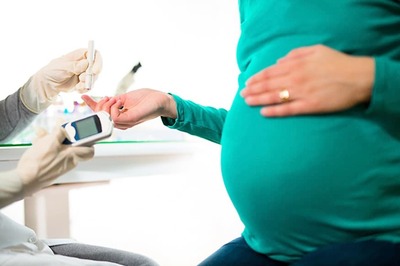
views
NAMAKKAL: The Cauvery river, the main source of water for most parts of the state, is facing a serious threat from the untreated industrial effluents, particularly from dyeing units and sewerage, being let into it.On a stretch of about 80 km in the district, two municipalities and five town panchayats contribute hugely to the contamination of the river water. Nearly 10 million litres of sewage is let into the Cauvery by Kumarapalayam and Pallipalayam municipalities, while a half of that quantity flows into the channels that connect the river from town panchayats -Venkarai, Paundamangalam, Velur, Pothanur and Mohanur situated along the banks. Over 200 illegal dyeing units functioning in Kumarapalayam and Pallipalayam let the effluents into the river, informed sources said.UGSSLack of underground sewerage systems (UGSS) in the civic bodies is stated to be the reason for letting the waste into the river.“In Kumarapalayam, a project for setting up UGSS was prepared by the Tamilnadu Water Supplies and Drainage (TWAD) Board at a cost of Rs 48.93 crore recently. However, the proposal was given up and a new one was being readied by a private consultant now,” K Krishnamoorthy, municipal commissioner of Kumarapalayam told Express.However, officials at the Pallipalayam municipality said that there was no proposal to set up a UGSS as of now. More than 3 million litres of sewerage was being let into the river every day from the municipal area.NRCP AbandonedAimed at making the Cauvery a pollution-free river, a scheme to recycle sewerage was implemented 12 years ago under the National River Conservation Plan (NRCP), but it was abandoned due to official apathy and resistance from farmers.“The scheme to save Cauvery from contamination was accorded sanction by the Union Government in 1999-2000 at an estimate of Rs 325.90 lakh. The idea was to collect the sewerage from five points in the area and bring it to a collection well at Manimegalai Street in Kumarapalayam where from the liquid waste will be taken to the sewerage treatment plant (STP) at Sanarpalayam,” an official explained.The sewerage will be recycled at the STP and will then be released into the river.The ambitious scheme ran aground after farmers opposed the operation of the wells that treat the sewerage fearing contamination of the ground water in their area.It is sad to note that the scheme was abandoned since 2007.However, sources said that it was due to the apathy of TWAD board officials that the scheme met with obstacles.




















Comments
0 comment